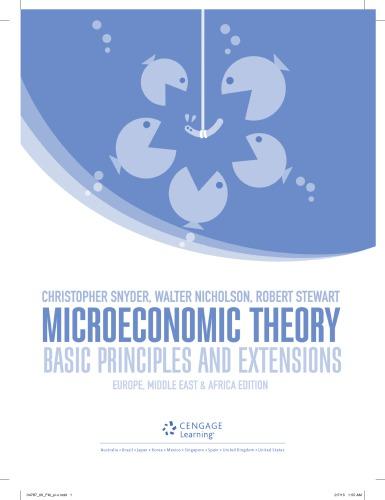7.9 Now consider varying the gamble in part (a) by multiplying each prize by a positive constant...
Question:
7.9 Now consider varying the gamble in part
(a) by multiplying each prize by a positive constant k.
Let h = kν. What is the value of E
(h 2)?
Suppose this person has a logarithmic utility function U(W) = ln W. What is a general expression for r (W )?
Compute the risk premium (p) for k = 0.5, 1 and 2, and for W = 10 and 100. What do you conclude by comparing the six values?
Return to Example 7.5, in which we computed the value of the real option provided by a flexible-fuel car. Continue to assume that the payoff from a fossil-fuel-burning car is A1(x) = 1 − x. Now assume that the payoff from the bio fuel car is higher, A2(x) = 2x. As before, x is a random variable uniformly distributed between 0 and 1, capturing the relative availability of bio-fuels versus fossil fuels on the market over the future lifespan of the car.
a.
Assume the buyer is risk neutral with von Neumann–Morgenstern utility function U (x) = x.
Compute the option value of a lexible-fuel car that allows the buyer to reproduce the payoff from either single-fuel car.
b.
c.
Repeat the option value calculation for a risk averse buyer with utility function U(x) = !x.
Compare your answers with Example 7.5.
Discuss how the increase in the value of the bio fuel car affects the option value provided by the lexible-fuel car.
Step by Step Answer:

Microeconomic Theory Basic Principles And Extensions
ISBN: 9781473729483
1st Edition
Authors: Christopher M Snyder, Walter Nicholson, Robert B Stewart






